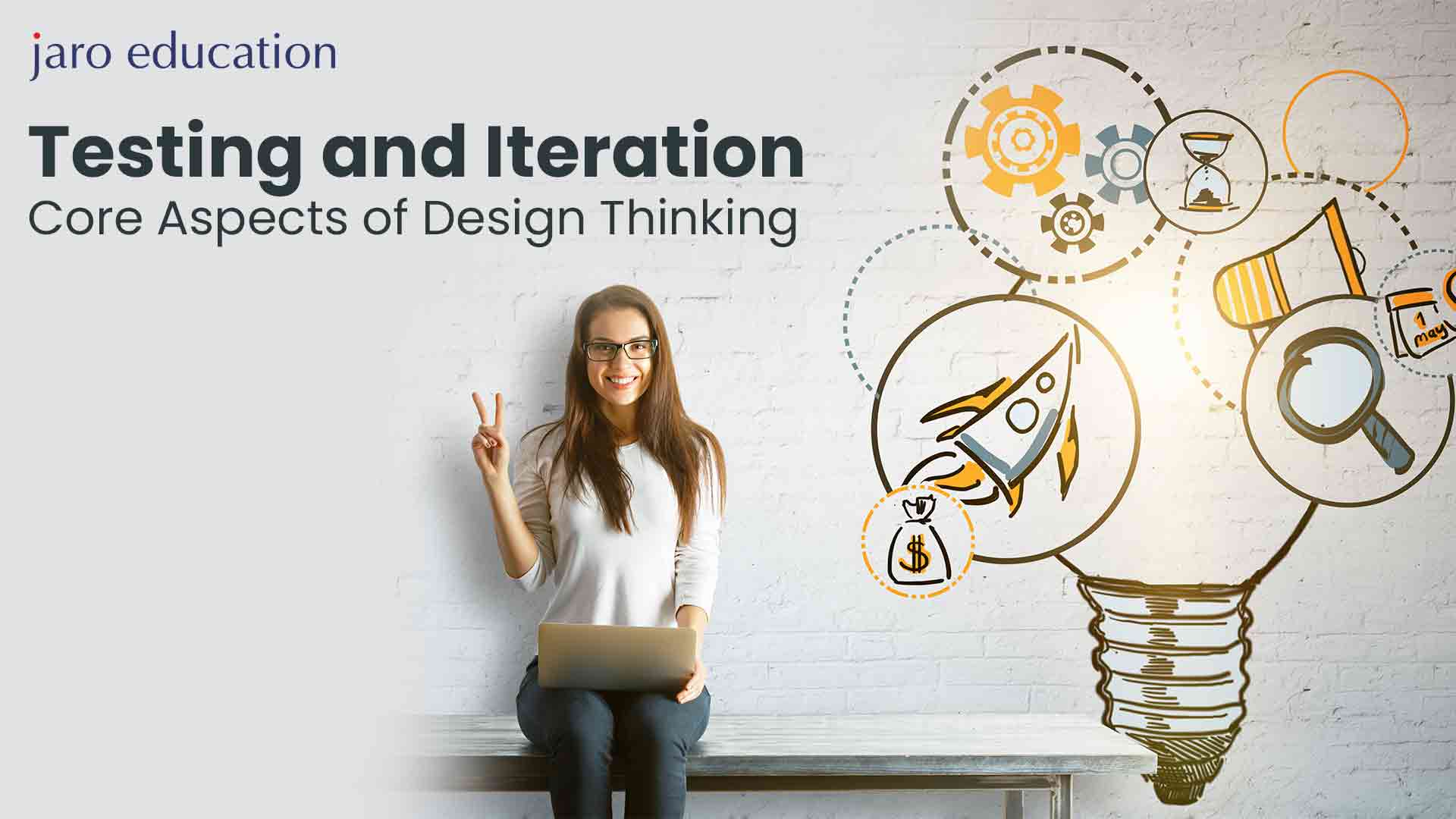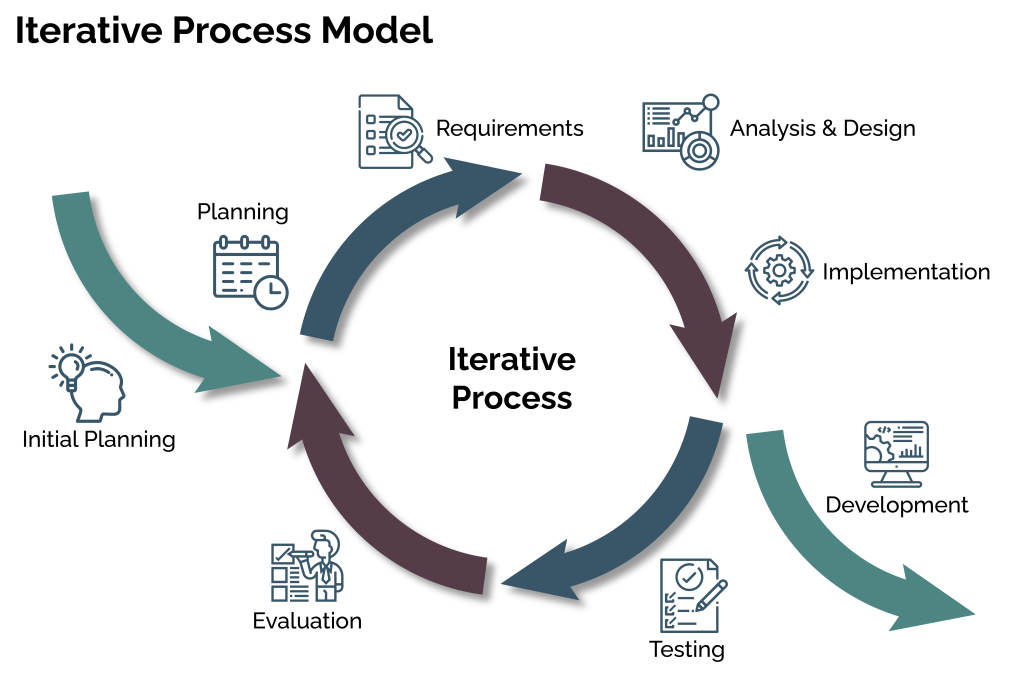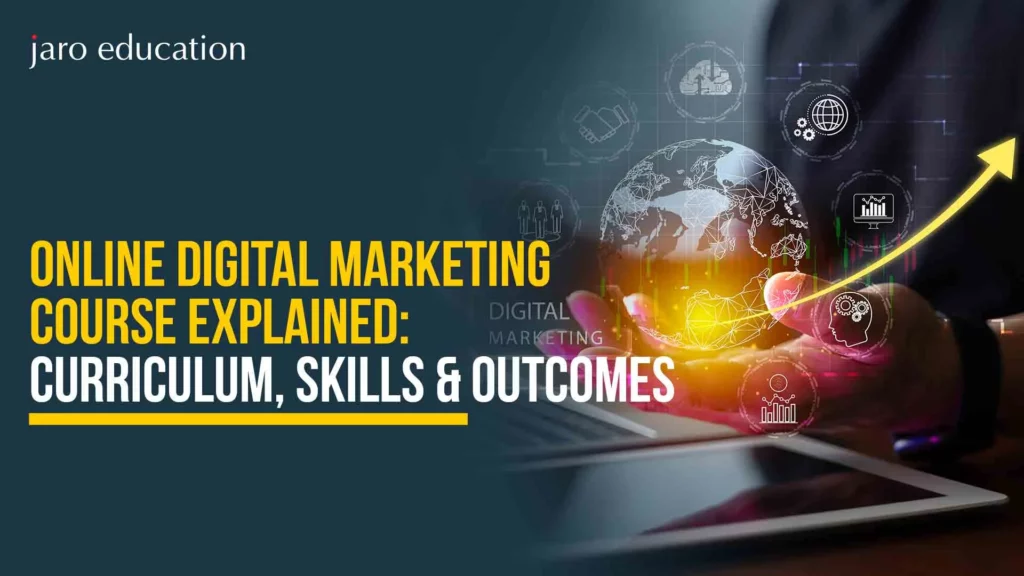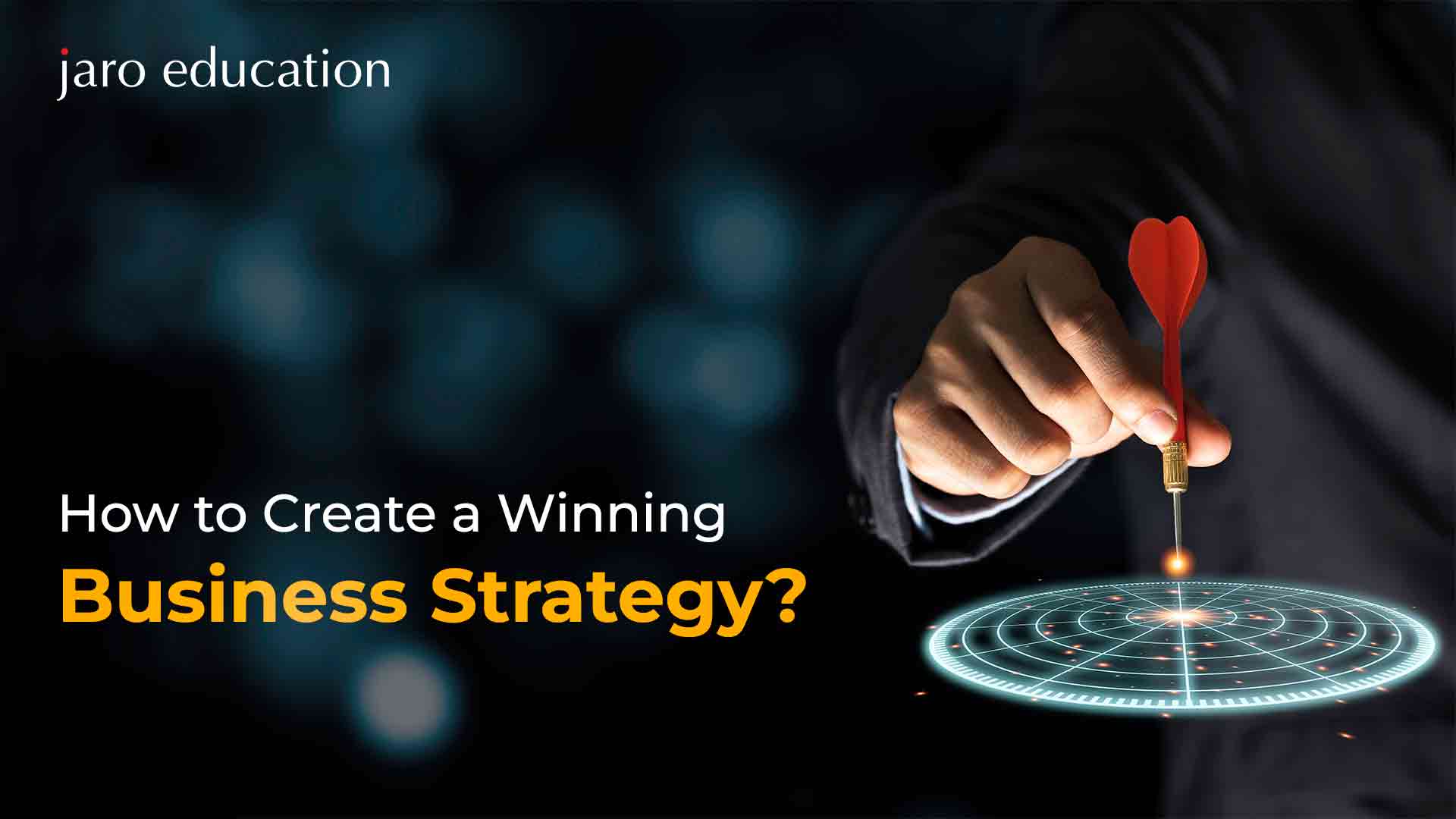Testing and Iteration: Core Aspects of Design Thinking
Table of Contents

- jaro education
- 31, January 2024
- 11:00 am
Design thinking and innovation, a problem-solving approach rooted in prioritising the user, has evolved into a versatile methodology applicable across diverse domains such as science, art, engineering, and business. Its effectiveness in tackling intricate and undefined problems is particularly evident in the realm of product development. Design thinking involves reframing issues, fostering creative solutions, and swiftly iterating on ideas through user-centric testing and experimentation.
In the face of challenges presented by the global market, one can propel one’s career in design innovation by enrolling in the Executive Programme in Product Innovation & Design Thinking for Business Growth at IT Delhi. This program underscores the significance of testing and iteration as the keys to design thinking success. Offering a comprehensive curriculum spanning Product Management, Design, Critical Thinking, Strategy, Growth, and Entrepreneurship, participants can cultivate the skills needed to construct and oversee distinctive products. Learning from professionals and staying updated about the latest trends, this programme equips individuals to thrive in dynamic design and innovation.
Foundations of Design Thinking: Core Principles for User-Centric Innovation
Design thinking is a problem-solving methodology that centres around five core principles, emphasising a user-centric and empathetic approach, collaboration, ideation, experimentation, and a bias towards action. These principles form the foundation of the design thinking process and guide product teams in their quest to create innovative and user-friendly solutions.
User-centricity and Empathy
Design thinking places users and their needs at the forefront of the creative process. This principle encourages a deep understanding of what users want, need, and how they feel when interacting with a product. To prioritise user-centricity and empathy, various methods can be employed, such as surveys, recordings, and user interviews. This continual focus on user experience is essential, as it aligns business goals with improving the product’s quality and addressing user pain points.
Collaboration
Collaboration is a critical component of design thinking, enabling diverse teams to break away from traditional problem-solving patterns. In this approach, teams from various departments, including customer support, marketing, sales, and customer success, contribute their insights to create a problem statement that guides the UX design process. This collaborative approach ensures a holistic understanding of the user journey, incorporating different perspectives and expertise from across the organisation.
Ideation
Ideation is the creative phase of design thinking, where teams generate a multitude of potential solutions to a given problem. The aim is to produce as many ideas as possible, irrespective of their initial quality. Creating a judgement-free environment is key to encouraging the free flow of ideas. It is also important to avoid allowing the opinions of the “Highest Paid Person” to dominate the ideation process. Employing various techniques like brainstorming, mind mapping, and sketching helps to explore a wide range of ideas. All ideas, even seemingly unfeasible ones, are recorded for future consideration.
Experimentation and Iteration
After ideation, the next step is to refine and test the ideas. A culture of experimentation is crucial for design thinking and is congruent with the methodology’s user-centric approach. Experimentation involves creating prototypes and conducting experiments to assess their impact. This process begins with defining clear goals, hypotheses, and Key Performance Indicators (KPIs) for measurement. Running experiments like A/B tests or funnel tests provides quantitative insights into the effectiveness of design solutions. Moreover, monitoring user behaviour and gathering qualitative feedback through methods such as session recordings and surveys enhances the understanding of the user experience.
A Bias Towards Action
The final principle of design thinking is to act on the ideas and insights generated throughout the process. Ideas that remain unrealised hold no value. To have a lasting impact on users and an organisation’s success, ideas must be transformed into tangible actions. Taking action involves releasing updated or redesigned features to a portion of the user base and closely monitoring their response. Continuous iteration, based on user feedback, ensures that improvements are made over time. This approach aligns with the belief that solutions need to be tested in the real world to be truly effective. It also exemplifies the importance of not being content with the status quo but continuously seeking ways to enhance the user experience.
Understanding the Principles of the Iterative Process
The iterative process is an approach to continuously improving a concept, design, or product. It involves creating a prototype, testing it, making adjustments, and repeating the cycle with the aim of approaching the desired solution. The iterative process is widely used across various fields, including design, development, education, science, and mathematics. It is a flexible and adaptable method that allows for refining a product through repeated cycles of adjustment.While anyone can employ the iterative process, it is particularly prevalent among professionals like designers, developers, educators, scientists, and mathematicians. The core idea is to gradually converge on a solution by making incremental improvements during each iteration.
Iterative Procedure in Mathematics
In mathematics, an iterative procedure is a method for finding a solution to a problem based on an initial guess. You begin with a guess, apply a series of algorithms or calculations, evaluate the result, refine your guess, and continue this cycle until you arrive at the correct solution. This process is instrumental in solving equations, optimization problems, and other mathematical challenges. The iterative approach acknowledges that you may not have the exact answer initially but can converge toward it with each iteration.
Use of Iterative Process
The iterative model is an alternative to the traditional Waterfall approach, which relies on sequential steps. It provides greater flexibility to address development or design inefficiencies promptly. Industries such as aerospace, technology, software development, and more have embraced the iterative model.
- NASA adopted the iterative approach for projects like Project Mercury and continued to use it in endeavours like the Space Shuttle program and developing the X-15 hypersonic aircraft in collaboration with the U.S. Air Force.
- IBM began using the iterative model in computer system design in the 1970s.
- Canada developed its air traffic control system with an iterative approach in the 1990s.
Today, businesses across various sectors employ iterative approaches for product development and meeting market demands.
Benefits of the Iterative Process
The iterative process offers several advantages:

*radiant.digital.
Efficiency
Building a product step by step reduces the need for extensive rework when changes occur.
Timeliness
Each iteration focuses on the highest-priority functionality, providing a clear picture of project status.
Collaboration
The project’s progression is visible to stakeholders and clients, ensuring that their requirements are fulfilled.
Usability
Testing and debugging are more straightforward with smaller iterations.
Eliminating Confusion
Inconsistencies or flaws in requirements, design, and code are detected early, avoiding misunderstandings.
Risk Management
High-risk aspects of a project are addressed first, and each iteration identifies and resolves risks.
Continual Improvement
Insights gleaned from past iterations are seamlessly integrated into the development process.
The Iterative Process Model
The iterative process model is a cyclical approach that involves making and testing incremental adjustments. It is widely applied in technology, engineering, software development, design, qualitative research, project management, and other domains.
Website Wikis
Websites like Wikipedia use the iterative process model to evolve with user-generated content continually.
Human-Computer Interfaces
Designers use user feedback to refine interfaces, improving usability.
Computing and Computer Programming
Iteration is key to creating algorithms and software, where code is repeatedly executed to achieve a desired outcome.
Project Management
The iterative approach is well-suited for handling changing requirements and user expectations during project development.
Education
In education, the iterative process encourages learning from mistakes, fostering a culture of continuous improvement.
Legal Systems
The common law system is built on previous legal decisions, following the iterative process model.
Evolution Science
Biological evolution demonstrates an iterative process of change in species characteristics over generations.
How the Iterative Process Works?
The iterative process involves a continuous cycle of planning, analysis, implementation, and evaluation. Each cycle produces a segment of development that serves as the foundation for the next cycle of improvement. The pace of development depends on product requirements and available resources.
Step One: Planning and Requirements
Initial requirements are mapped out, related documents are gathered, and a plan and timeline for the first iterative cycle are created.
Step Two: Analysis and Design
Business needs, technical requirements, and database models are finalised based on the plan. A working architecture or algorithm that satisfies requirements is developed.
Step Three: Implementation
Functionality and design are developed to meet specifications.
Step Four: Testing
Issues that don’t meet expectations are identified and located, with input from stakeholders, users, and testers.
Step Five: Evaluation and Review
The iteration is compared to requirements and expectations.
After completing these steps, the next cycle begins, building upon what works and incorporating lessons learned from previous iterations. This iterative approach is flexible, allowing for adjustments and refinements as new needs or unforeseen challenges arise.
Conclusion
Design thinking is a powerful problem-solving methodology that revolves around user-centricity and empathy. However, it is through the principles of experimentation and iteration, as well as a bias towards action, that design thinking truly comes to life. Experimentation and iteration are essential for transforming ideas into effective solutions through a cyclical process of testing and refinement. Meanwhile, a bias towards action ensures that ideas are not merely intellectual exercises but are implemented to bring real benefits to users.
Embrace the core tenets of design thinking, experimentation, iteration, and action through the “Executive Programme in Product Innovation & Design Thinking for Business Growth at IIT Delhi.” To know more about this programme, contact Jaro Education.









1 thought on “Testing and Iteration: Core Aspects of Design Thinking”
This blog provides a clear and insightful explanation of the testing iteration process, emphasizing its importance in software development. The breakdown of each phase helps readers understand how to enhance software quality effectively. A valuable resource for anyone looking to improve their testing strategies.